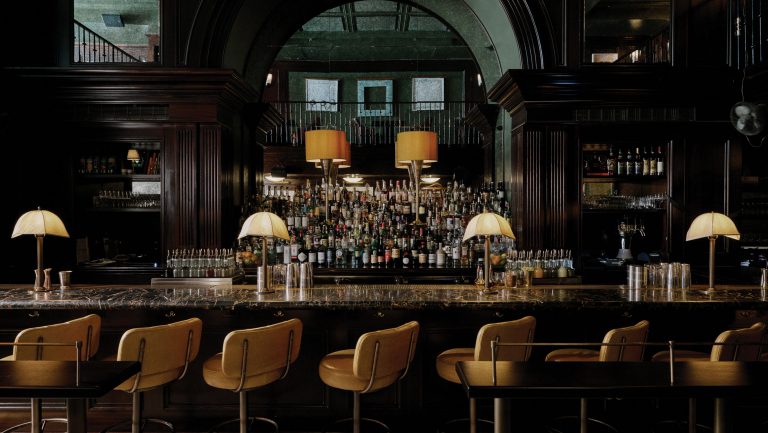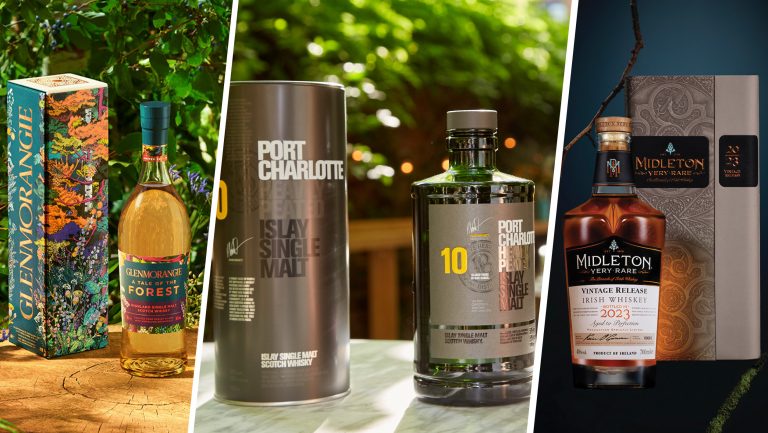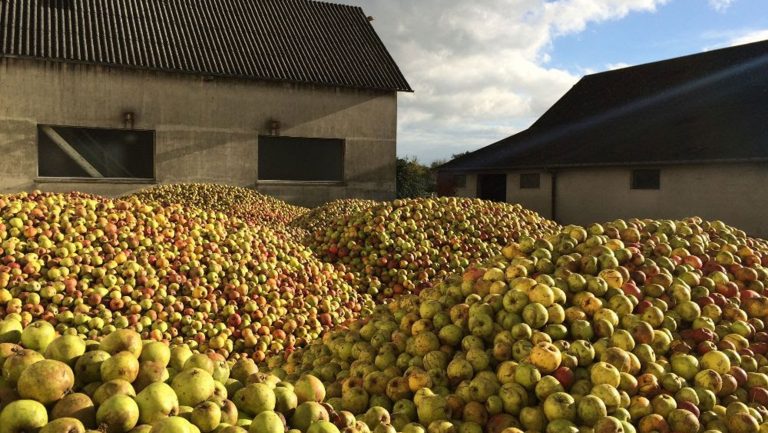Given whiskey’s steady surge over the past decade or so, as well as the rapid climb of agave-based spirits, it’s no surprise that the beverage alcohol industry has been eager to anoint another category as the next big thing. Plenty of candidates might fit the bill, but one that’s been getting a lot of attention lately—and rightly so—is American brandy.
“Whiskey has really turned it up for brown spirits, and now there’s this whole market of fruit-based barrel-aged products,” says Daniel Ruiz, head distiller of Clear Creek Distillery, which has been making fruit-based spirits in Portland, Oregon, since 1985.
And it’s not just oak-matured products that have benefited from whiskey’s popularity. The craft cocktail movement has helped put unaged whiskeys on the map as well. This trend has been especially good for Clear Creek’s pear-based eau de vie.

Don’t miss the latest drinks industry news and insights. Sign up for our award-winning newsletters and get insider intel, resources, and trends delivered to your inbox every week.
“A lot of mixologists really like our spirits because they have the essence of the fruit, a character they’re able to use in a lot of different kinds of cocktails,” Ruiz says. “And that leads to more people buying it and using it on their own.”
However, while there’s considerable opportunity for further growth in brandy, don’t expect the category to look that much like whiskey—at least not for a while. Overall brandy and Cognac volume—which the Distilled Spirits Council of the United States measures as a single category—grew by 5.4 percent in 2016, which slightly outpaced whiskey’s 4.1 percent increase. But whiskey is a much larger category in the U.S., with nearly 62 million total cases (including imports) to brandy and Cognac’s 13 million, according to the Distilled Spirits Council. And the brandy and Cognac category is rather top heavy, with two-thirds of total market share belonging to four brands, according to the retail market research company IRI.
There are relatively few American-based producers whose primary product is brandy—either grape-based or derived from other fruits. Among those are venerable companies as well as some successful newcomers. In the former group is Laird & Company, the nearly 240-year-old, family-owned maker of Laird’s Applejack (whose base of operations remains in New Jersey, though distillation moved out of state in the 1970s). In the latter group is Copper & Kings, one of the most prominent craft producers leading the renaissance in American-made brandy.
Launched in Louisville, Kentucky, in 2014 by husband-and-wife team Joe and Lesley Heron, Copper & Kings quickly made a name for itself by producing apple and grape brandies—as well as absinthe and a small amount of gin—in the heart of bourbon country.
Despite the company’s success, Joe Heron acknowledges that there are certain challenges that other spirits categories don’t have to face. One of those relates to brandy’s legal definitions, as per the Alcohol and Tobacco Tax and Trade Bureau (TTB). “The word ‘brandy’ [alone] in America means grape brandy,” says Heron, whose previous foray into the fruit-based alcohol business was in the form of Crispin Cider, which he sold to MillerCoors in 2012. “If you’re made from any other fruit, you have to define yourself as a ‘fruit brandy.’”
The upside for the nongrape varieties is that they can be bottled unaged and still be called fruit brandy. Grape brandies must be aged for a minimum of two years or their packages will be labeled “immature” brandy. “That’s not attractive nomenclature,” Heron says. “But that’s the arcane TTB rule.”
Then there are supply problems to be overcome. Whenever media stories appear about whiskey shortages, they usually relate to diminishing stocks of mature spirit, not lack of raw ingredients. The problem with brandy is access to usable fruit, which isn’t as easy to come by as grain. “It takes five tons of grapes to make one barrel of brandy; it’s a little bit more when you look at apple because it doesn’t have as much sugar in it,” says Heron. “The same goes for pears, plums, and cherries. Making a scalable eau de vie is actually quite challenging, and the cost of it is extremely high.”
There’s also a bit of a catch-22 associated with supply and demand. If more distillers get into the brandy business, that will spur fruit farming. But for the spirit to be a viable investment for a producer, there has to be enough good fruit available immediately.
Cedar Ridge Winery and Distillery in Swisher, Iowa, has been making grape, apple, and other fruit brandies for the past decade, but its biggest focus has been its bourbon, rye, and single-malt whiskeys. “We spend hundreds of thousands a year on advertising and marketing, all for the whiskey,” says Cedar Ridge founder and owner Jeff Quint. “We don’t spend a dime promoting these other products.”
That decision may be rooted for the most part in simple economics, but it also has to do with brandy’s learning curve—both for consumers and producers.
Tackling the recipe and acquiring usable fruit is one thing, but if distillers want to sell an aged product, they also have to worry about the time frame. Even though two years is the minimum for a grape distillate to achieve brandy status, Cedar Ridge doesn’t release anything younger than five years old.
“If we’re going to push the stuff now, I don’t have enough of it, and it takes five years to get ready,” Quint says. “So do I start promoting it now for 2022, when I’ll have enough?”
In addition, if a start-up distillery is going to make brandy its central category, it will need very patient investors, which are generally in short supply. But whatever the investment, those who’ve thrived in the category say there will probably be some return.
“I don’t think it’ll hit the growth that bourbon and whiskey [in general] have hit, because more people have known whiskey and it’s just been part of the culture for such a long time, at least in recent history,” says Clear Creek’s Ruiz. “Brandy is growing and it will continue to grow. It’ll just take a little longer.”

Dispatch
Sign up for our award-winning newsletter
Don’t miss the latest drinks industry news and insights—delivered to your inbox every week.
Jeff Cioletti is a former editor in chief of Beverage World magazine and the author of the books The Drinkable Globe, The Year of Drinking Adventurously, Beer FAQ, and the upcoming Sakepedia. He’s a Certified International Kikisake-shi (sake sommelier).







